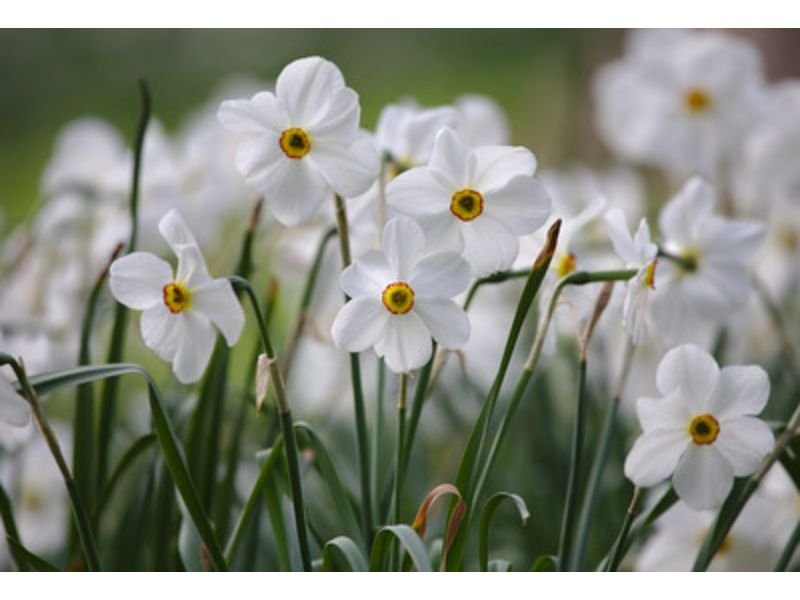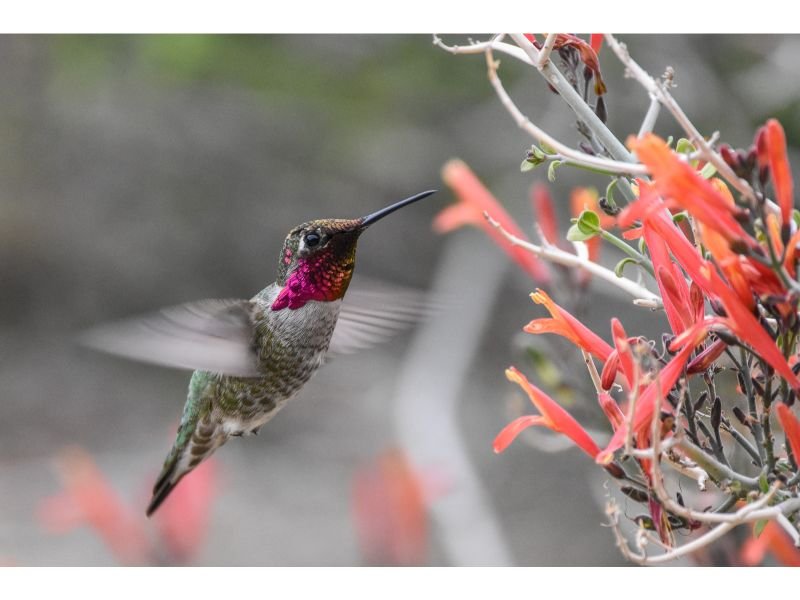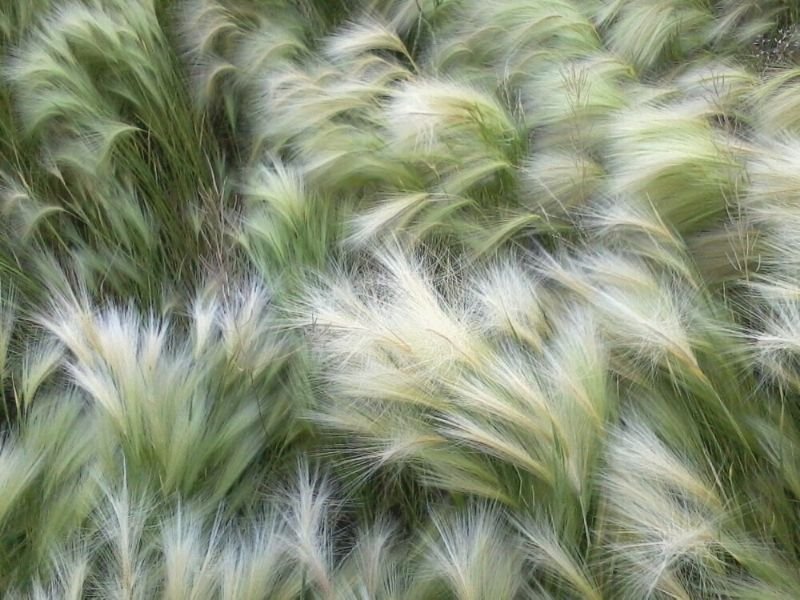Whether you’re an ardent admirer of chrysanthemums and are looking for their doppelgänger or simply a passionate gardener in pursuit of a fresh addition to your blossoming menagerie, you’ve arrived at the right space. In this section, we’ll guide you to all flowers that look like chrysanthemums, from the classic variety of daisies to the deer-resistant pincushions, along with tips on how to maintain each of them. Enjoy!
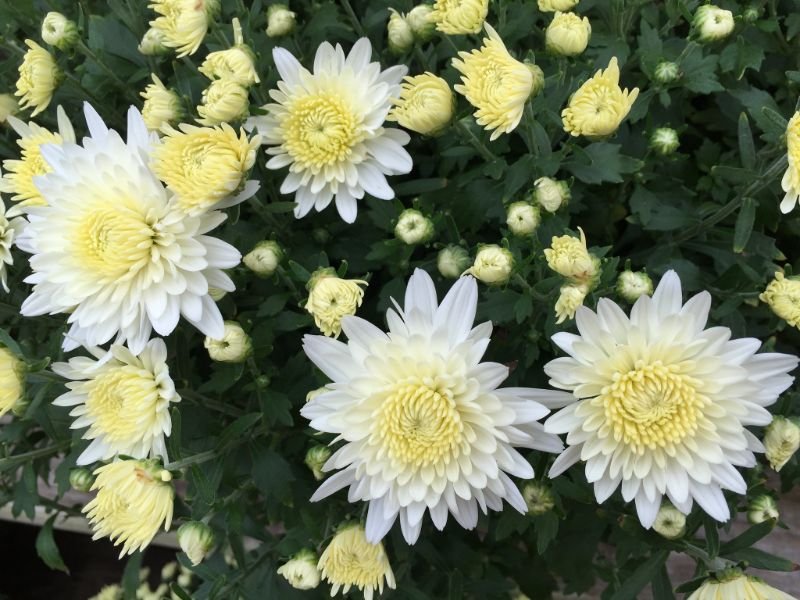
Table of Contents
Perennial Flowers That Look Like Chrysanthemum
Shasta Daisy (Leucanthemum x superbum)
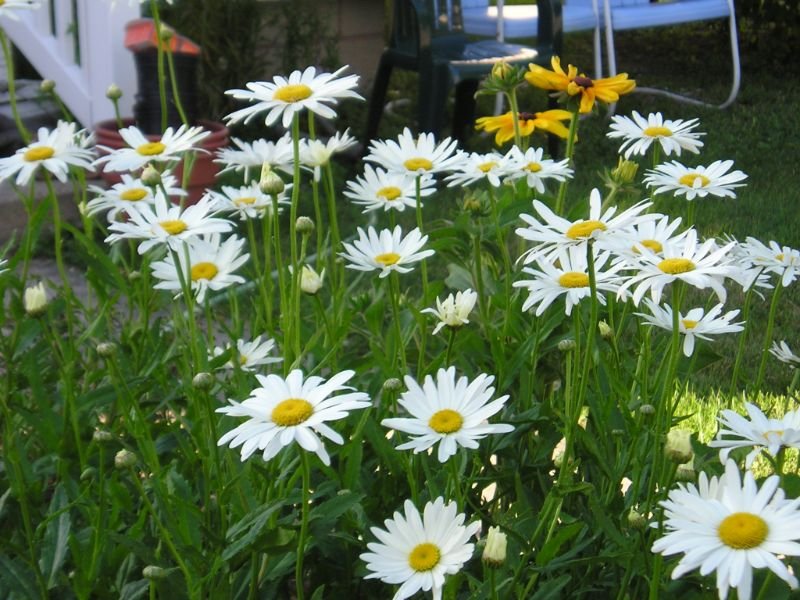
Zones: 4 to 9
Shasta daisy reigns as the first perennial delight that mirrors the chrysanthemum. Bask them in a gardening bed with full sun, for at least four to six hours daily. They’re tolerable to a broad kind of soil, from loam to sandy, as long as it’s rich in humus and is kept consistently moist. Shasta daisy is easy to categorize, with daisy-like petals and a bright greenish-yellow center that will also brighten up your landscape!
Common Coreopsis (Coreopsis grandiflora)
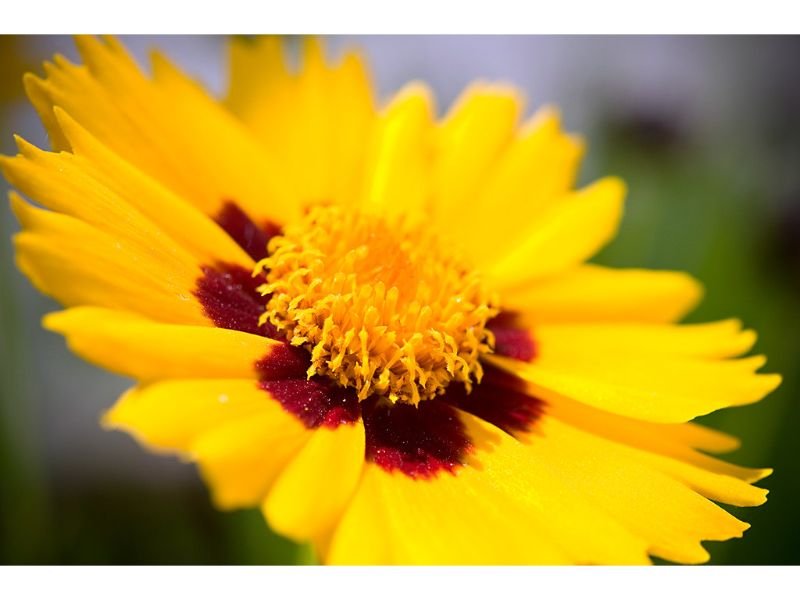
Zones: 4 to 9
To nurture this flower that looks like a chrysanthemum, you need to create a heaven in well-drained soil. As for humidity, this flower adapts well to a wide range, although you still need to monitor and keep the humidity from being too low or too high. These low-maintenance charmers need at least 6 hours of daily full sun but they do tolerate some shade, moreover in areas with hot summers.
Coreopsis with its bright yellowish color is one of the yellow flowers we recommend growing if you live in Zone 5, as they adapt well to the gardening condition in Zone 5: The northeastern United States, which includes states like Maine, New Hampshire, New York, Pennsylvania, and West Virginia, as well as parts of New England, and the northern part of the Central US, covering states such as Minnesota, Iowa, Nebraska, and Wisconsin.
Nippon Daisy (Nipponanthemum nipponicum)
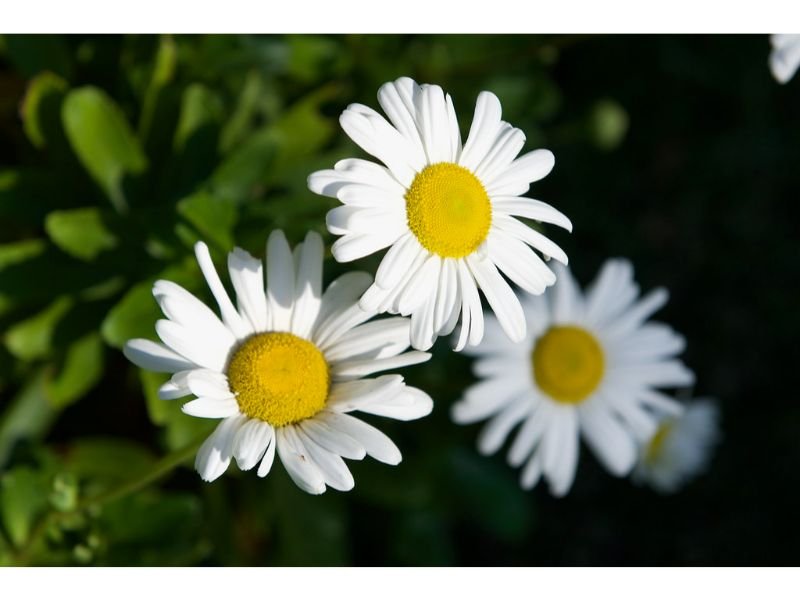
Zones: 5 to 9
Also known as the Montauk daisy, this native to Japan chrysanthemum look-alike is mainly used as an ornamental flower, thanks to its showy white blooms. Standing at a height of around 1 to 2 feet (30 to 60 centimeters), with a similar width, the growing requirements for this eye-catching flower are similar to the shasta daisy and common coreopsis. Minimal deadheading is required to maintain their blooming season, which starts from fall to summer.
Annual Flowers That Look Like Chrysanthemum
African Daisy (Gazania rigens)
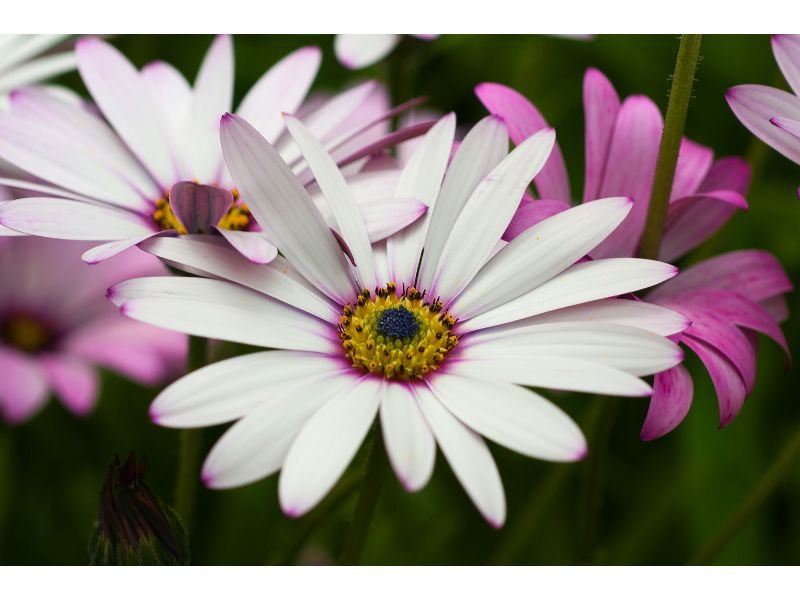
Zones: 9 to 11
These dazzling flowers thrive well in areas where the temperatures remain consistently warm throughout the year. African daisies, aside from their look-alikeness with chrysanthemums, are also favored by many gardeners for their prolonged blooming season and maintenance routine that would likely not give you a headache. They prefer loamy and sandy soil over clay soil, which can be waterlogged and too heavy for their delicate roots.
If you are interested to get more details on how to care for African daisies or cape marguerite, read our thorough article here.
Chinese Aster (Callistephus chinensis)

Zones: 2 to 11
What flower looks like chrysanthemum and also shares similar growing requirements? Yes, that’s the captivating Chinese aster! Start with well-draining soil and awaken their vibrant lavender, pink, and white petals with a minimum of 6 to 8 direct full sun daily. This flower is a major attractor for pollinators and butterflies and surely would beautify any dull borders and empty containers.
Marigold (Tagetes)
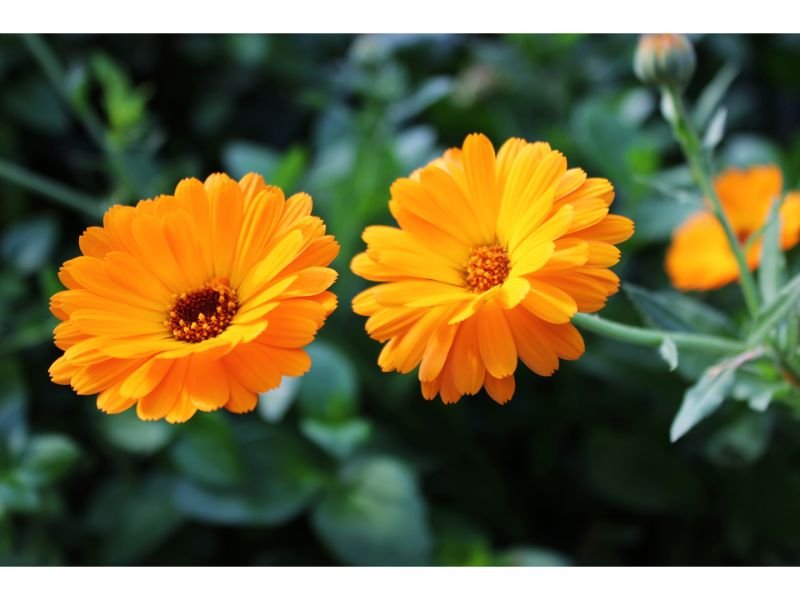
Zones: 2 to 11
Rich in antioxidants and carotenoids, the marigold is not only an annual flower that boasts a chrysanthemum-alike charm but is also known as the flower of the dead in Mexican culture. These edible sun worshippers can reach a height of anywhere between 6 inches (15 centimeters) to 3 feet (90 centimeters). With minimal fuss, you can grow marigolds almost anywhere, either as a houseplant or as a limited-space-friendly flowering plant. They are also known as shallow-rooted plants which means they can survive in not-too-deep soil like potting or containers. They tolerate heat and poor soil but never let their soil be too soaky.
Purple Flowers That Look Like Chrysanthemum
Coneflower (Echinacea purpurea)
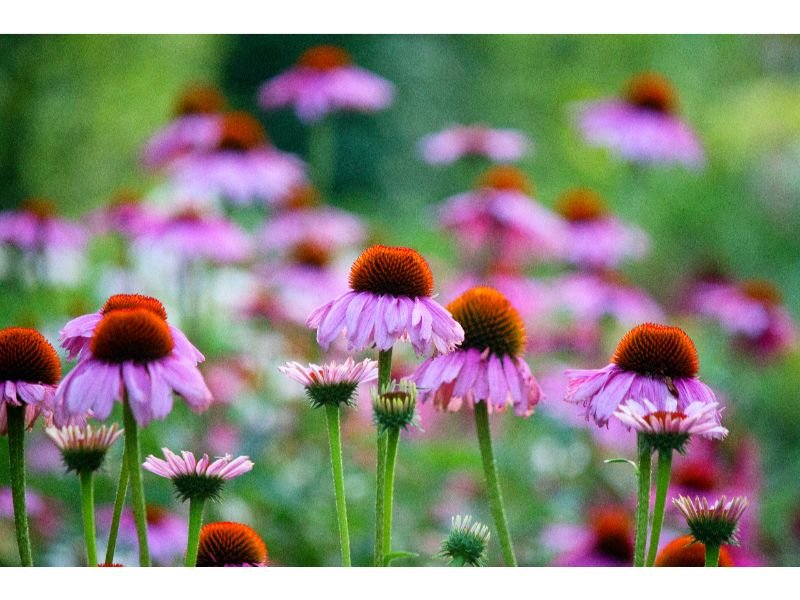
Zones: 3 to 8
If you’re wondering what flower looks like a chrysanthemum but with numerous health benefits, you should try to get to know about coneflowers. Broadly known to treat various illnesses such as common colds and coughs, you don’t need a fancy, laboratorium-alike garden to thrive in this low-maintenance perennial. Coneflower is a sun-loving marvel that performs the best in moist and humus-rich soil. They’re not too picky when it comes to soil type but make sure to keep the soil’s pH in neutral range.
New England Aster (Symphyotrichum novae-angliae)

Zones: 4 to 8
Favored for their pale lavender petals, these flowers that look like chrysanthemums are such a favorite snack for rare butterfly species, the monarch butterfly! These sun and partial shade seekers are fans of moist soil that would not drown their delicate root system. In the wild, New England asters can be found thriving in mountainous areas, where they can grow to as tall as 6 feet (180 centimeters), much taller than chrysanthemums.
Pincushions (Scabiosa)
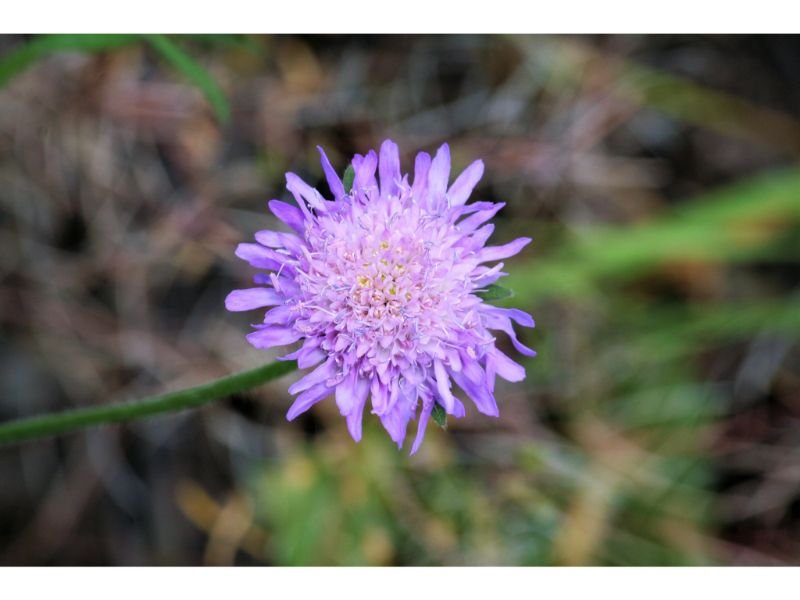
Zones: 3 to 11
With a unique pincushion look-alike fluorescent, it would be difficult to not turn your head around when you find these beauties in someone’s garden. Pincushions, as their growing zones indicate, tolerate a wide range of temperatures and humidity. However, they need to be kept in moist soil that is high in organic matter and requires at least 6 hours of direct sun each day to unveil their vibrant and unique petals.
Yellow Flowers That Look Like Chrysanthemum
Golden Marguerite (Anthemis tinctoria)

Zones: 3 to 8
Nicknamed the yellow chamomile or ox-eye chamomile, this chrysanthemum doppelgänger lives up to its name, as they’re adorned with bright yellow petals and precious golden centers. As ‘expensive’ as they may seem, golden marguerite is a type of flower that doesn’t need much to thrive. They crave the warmth of full sun, and tolerate some shade as well as drought, but prefer being in moderate to slightly humid conditions.
Calendula (Calendula officinalis)

Zones: 2 to 11
Who doesn’t know calendula, a flower wonder that wows with its powerful wound healing and anti-inflammatory effect? When it comes to cultivation needs, calendula is a sun-loving gem that grows well in broad pH of the soil, from slightly acidic to alkaline but demands fertile sandy, loamy, or clay soil. They’re rabbit resistant but not forgiven when it comes to frost.
Dahlia (Dahlia)
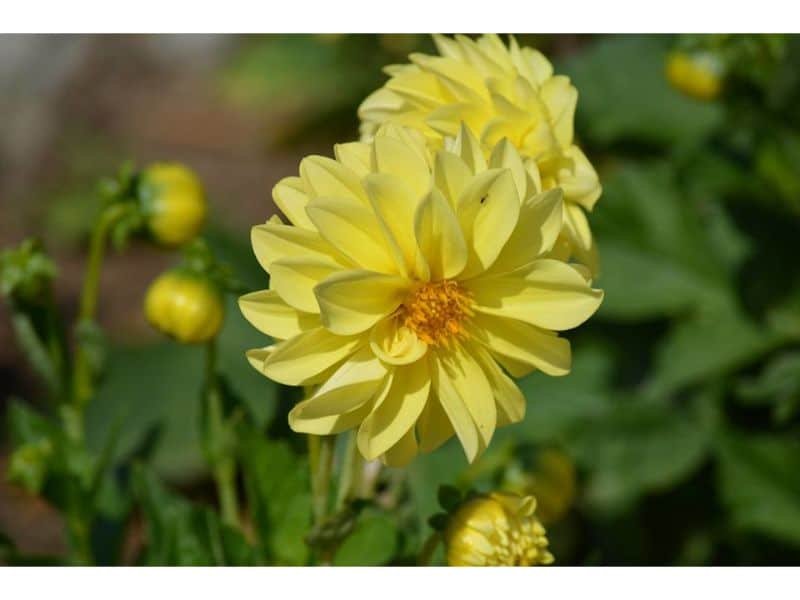
Zones: 7 to 10
To successfully grow this classic flower, you need to water them with a gentle touch, keeping the soil moist but not too soaky as they prefer a balanced watering approach. Unlike calendula and golden marguerite, dahlia thrives in mild climates and prefers a moderate to slightly humid environment. They soar to an impressive height of 6 feet (180 centimeters) or even more!
Red Flowers That Look Like Chrysanthemum
Gerbera Daisy (Gerbera jamesonii)

Zones: 8 to 10
This chrysanthemum look-alike is easy to take care of for novice gardeners. They yearn for the warmth of sunlight but don’t mind being in shady areas, and similar to dahlias, prefer mild climates to thrive. From fall to summer, gerbera daisies will become a haven for pollinators, beckoning bees and butterflies with their nectar-rich blossoms.
Carnation (Dianthus caryophyllus)
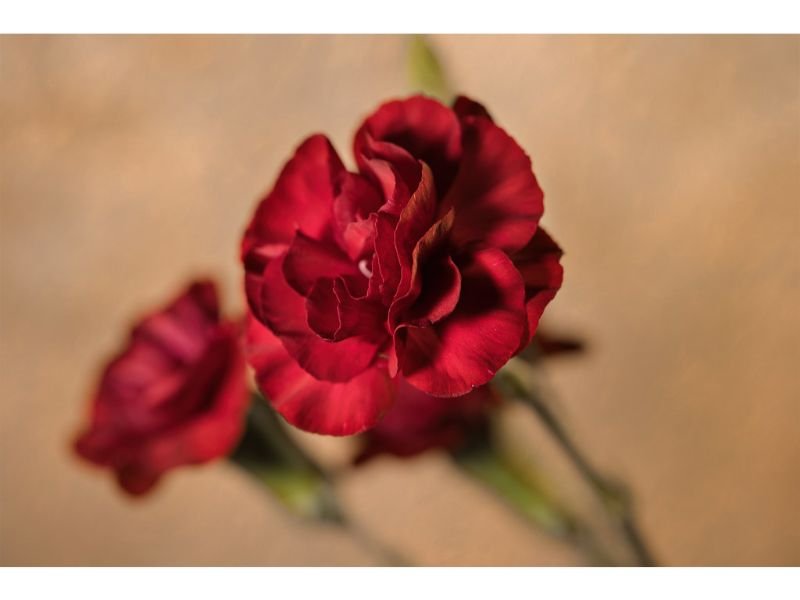
Zones: 6 to 9
It’s easy to fall in love with carnations. These herbaceous perennial flowers that look like chrysanthemums will provide you with spectacular edible and fragrant blossoms, but most importantly, they’re not that complicated to maintain. Similar to most flowers, carnations require fertile gardening beds where their soil can grow, with clay, loamy, or sandy soil as you wish. They should be planted in an area that gets a daily 6 or more hours of direct full sun, but this botanical gem also tolerates some shade.
Carnations are often faired with Marigold to create stunning color contrast in the garden, we discuss further these two best flowers comparison which you can check here.
Zinnia (Zinnia)

Zones: 3 to 10
Although can be grown in a broad range of zones, this chrysanthemum flower look-alike grows best in warmer climates, with a minimum of 6 hours of daily sunlight. Aside from their long blooming season, zinnias are also good to be made as cut flowers that can last anywhere from five to twelve days under the right circumstances. They tolerate almost any kind of soil as long as it’s fertile, consistently moist, and has a good drainage system.
Final Verdict
The world of plants offers a delightful array of flowers that look like chrysanthemums, each with its own charm. With diverse colors, shapes, and sizes, don’t forget to let these chrysanthemum twins captivate your landscape and become a true masterpiece of your indoor or outdoor garden!

New author in the hood. Loves gardening and flowers are my spirit animals (yes I know they are not animals but I insist). I will be covering most of the flowers’ topics here and occasionally random though as well.

